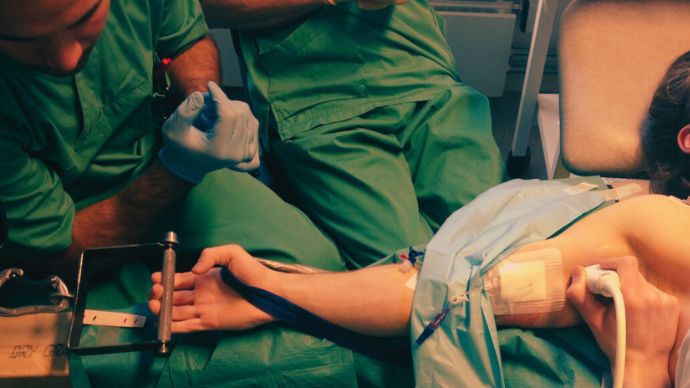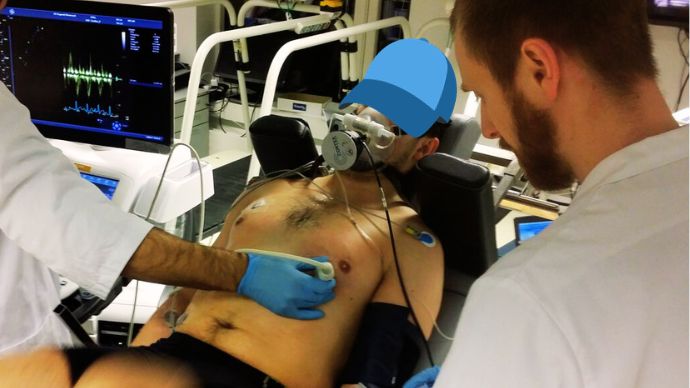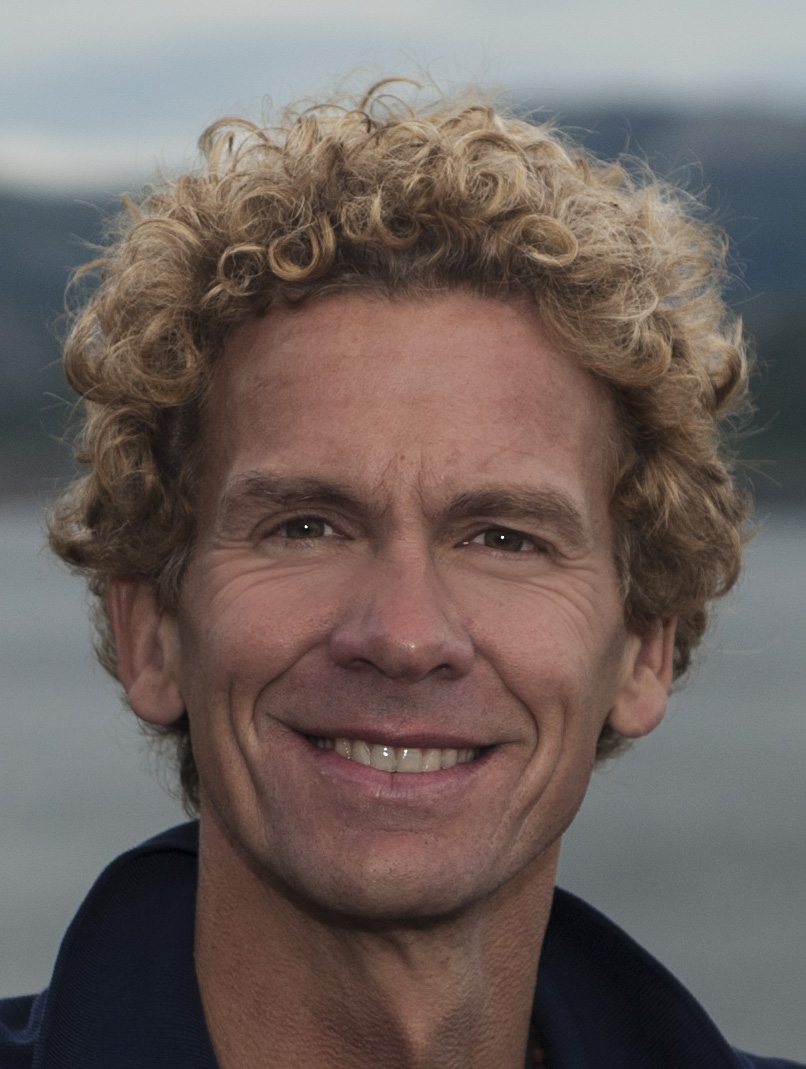Specifically, we research the interaction between oxygen supply and demand during physical work, the nervous system and skeletal muscle, with particular emphasis on the effect of physical training as an antidote to the detrimental consequences of ageing and lifestyle-related illnesses.
Below is a description of a combination of typical in vivo and in vitro experimental procedures we use in human models.
Blood flow kinetics
Using a combination of high-resolution ultrasound of the brachial artery and intravenous catheters, we measure blood flow and oxygen uptake during small muscle mass forearm exercise up to maximal intensity to assess the mechanisms regulating and limiting oxygen uptake.

Cardiovascular function
Here, using Doppler ultrasound, we measure cardiac function during exercise with increasing intensity on a recumbent cycle ergometer. The Doppler ultrasound enables examination of heart rate, ventricular volumes and function during work.

Neuromuscular function
Due to the important role of neural factors in the age-related decline in maximal strength, rate of force development, and power, we examine H-reflex excitability and efferent drive from supraspinal and spinal centres during maximal voluntary contractions in trained and untrained populations.
Muscle biopsies
As the force developed by muscle depends on motor unit activity as well as the contractile properties of muscle fibers, we examine the latter in collaboration with other laboratories at European universities through a range of in vitro techniques.

Contact
Research group leader

E-mail:
Phone:
.jpg)